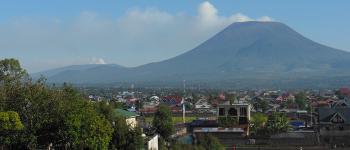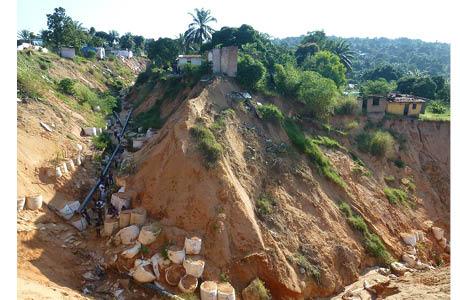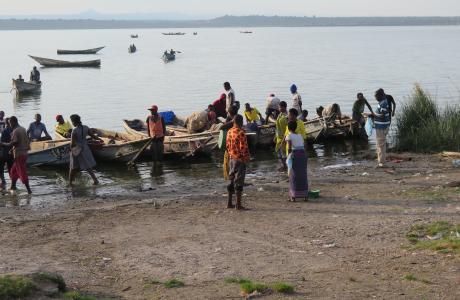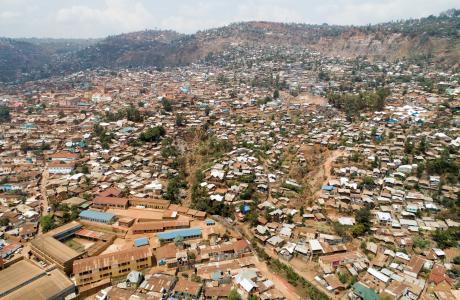15 years of research and collaboration in Goma, DR Congo
Follow the latest developments regarding the Nyiragongo eruption
On 22 May 2021, the Nyiragongo volcano in eastern DR Congo erupted. Lava flows reached villages on the outskirts of Goma. Days later, even though the lava flows stopped progressing ten to twelve hours after the eruption onset, the situation is still worrying with an intense seismic activity. The AfricaMuseum collaborates with the Goma Volcano Observatory for the monitoring of the volcanic and seismic activity. The museum also published a page with the latest developments regarding the eruption.
This collaboration has been going on for a long time. In 2005, the Royal Museum for Central Africa and the Goma Volcano Observatory started working together to better understand and assess the volcanic risks directly threatening Goma’s one million inhabitants.

The Nyiragongo volcano dominates the city of Goma, DRC. (© N. d’Oreye)
Nyiragongo, Africa's most dangerous volcano
Nyiragongo is one of the most active volcanoes in Africa. Located in eastern DR Congo, near the border with Rwanda, this volcano dominates the city of Goma at only 15 kilometers, directly threatening its population.
During its two historical flank eruptions, in 1977 and 2002, devastating lava flows killed dozens of people and caused a major humanitarian and economic crisis in this region already plagued by recurring armed conflicts. After the 2002 eruption, international aid followed to support the reconstruction and to strengthen the poorly equipped Goma Volcano Observatory.
Today, Goma’s population is estimated at one million people - twice as much as in 2002 - suggesting an unprecedented disaster in the region in the event of another volcanic flank eruption.
Towards a better understanding and assessment of volcanic risk
In 2005, the Royal Museum for Central Africa (RMCA) and the Goma Volcano Observatory entered into collaboration. This collaboration focused, amongst others, on the development of tools to improve monitoring capabilities. Following the success of remote sensing techniques, networks of instruments were deployed on the ground in partnership with the Luxembourgian National Museum of Natural History (MNHN) and the European Centre for Geodynamics and Seismology (ECGS). Today, thanks to the different techniques that have been developed, the understanding and monitoring of the volcano has drastically improved, but faces the challenge of sustainability. Through the supervision of Congolese doctoral students, with the support of DGD, the RMCA is also helping to reinforce the capacity of Congolese institutions.
In parallel to the study of hazards, the RMCA's collaboration has extended to other aspects involving the Goma Volcano Observatory and other partners, such as the North Kivu Civil Protection with whom awareness tools for the population are developed. The Civil Protection, in its desire to improve the response in the event of a new crisis, has launched, with the help of many partners including the RMCA, the development of contingency and evacuation plans involving the political authorities of the DR Congo and Rwanda.
Sharing the experience of an international collaboration
On 5 May 2021, scientists from the Goma Volcano Observatory, the Royal Museum for Central Africa’s GeoRiskA research team, and partners from the ECGS/MNHN and the North Kivu Civil Protection have presented their 15 years of research and collaboration during a webinar organized by UNESCO’s Geoheritage for Resilience Programme.


